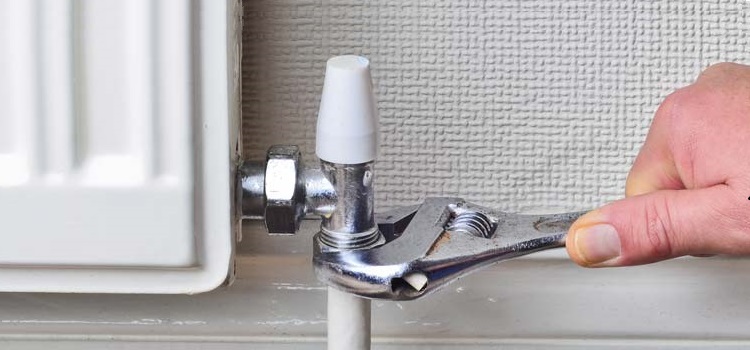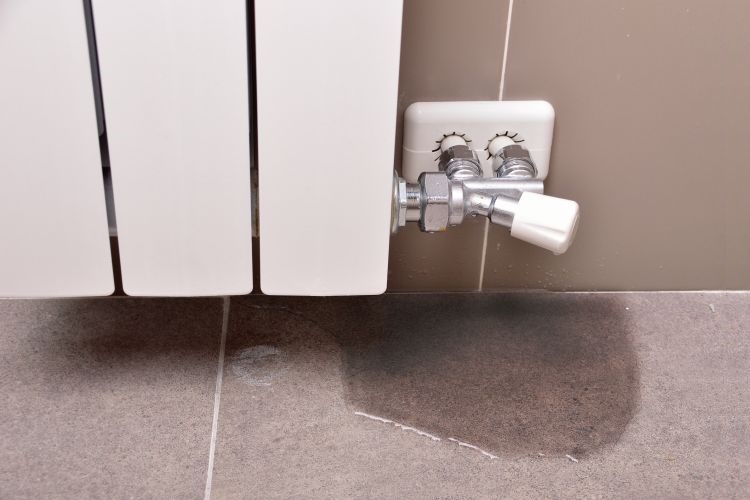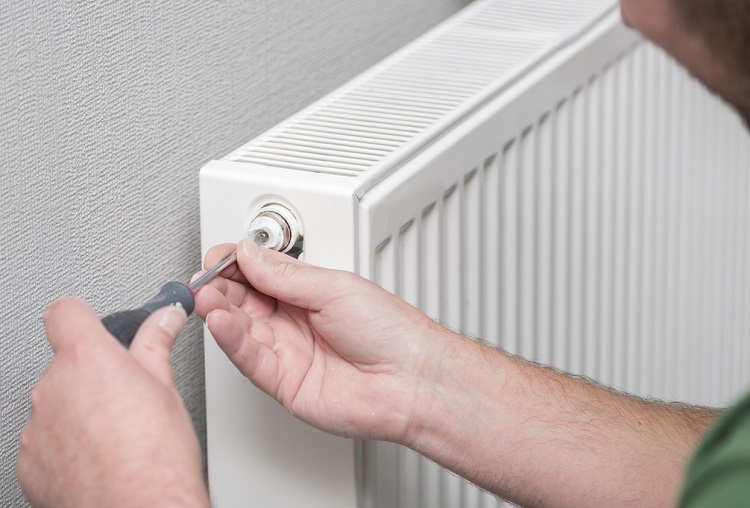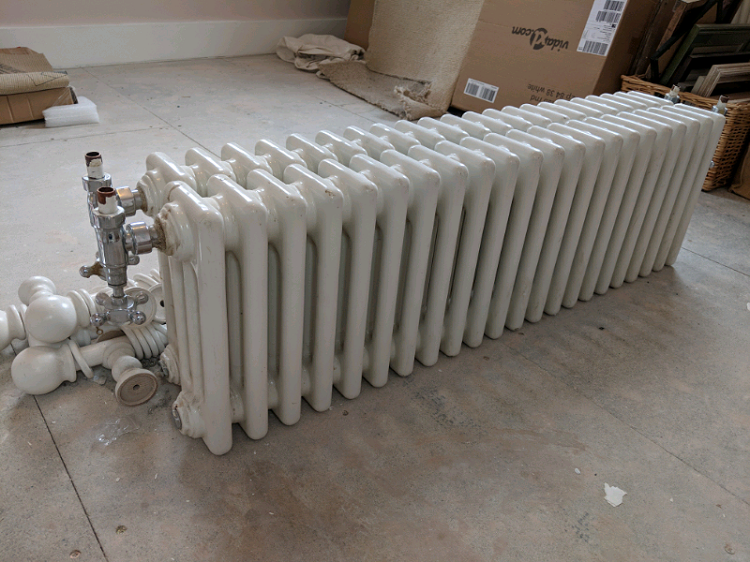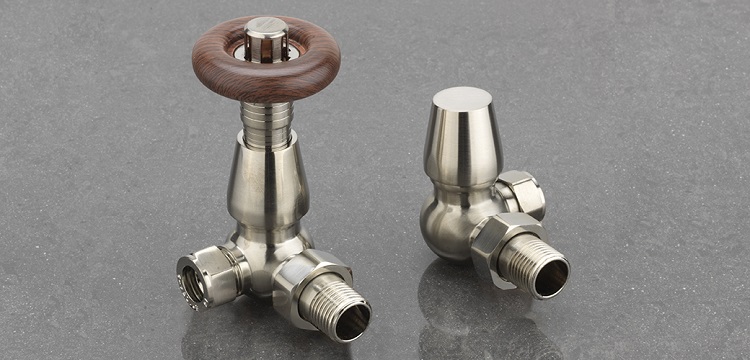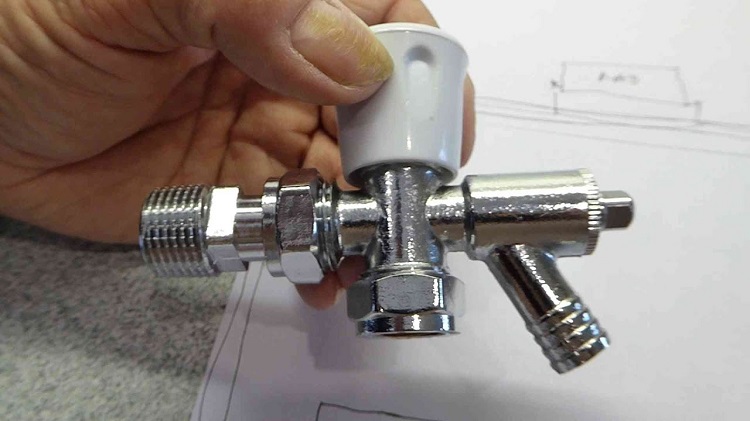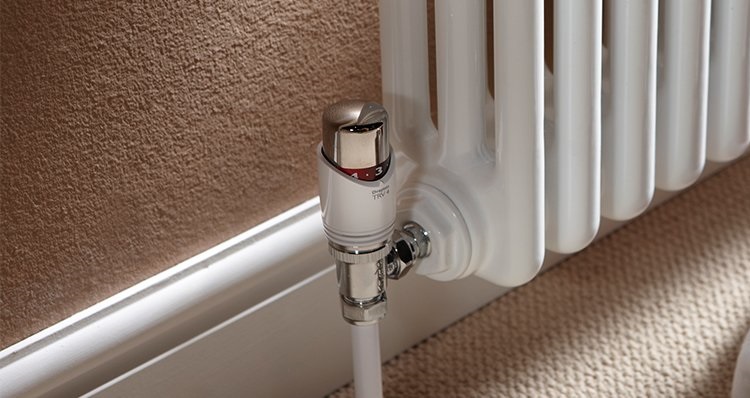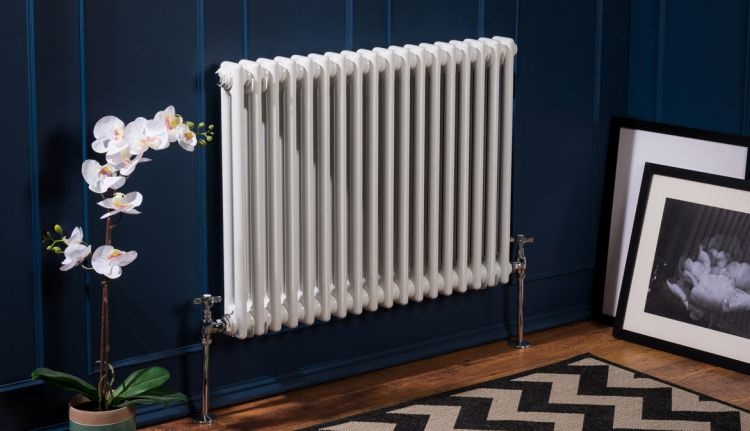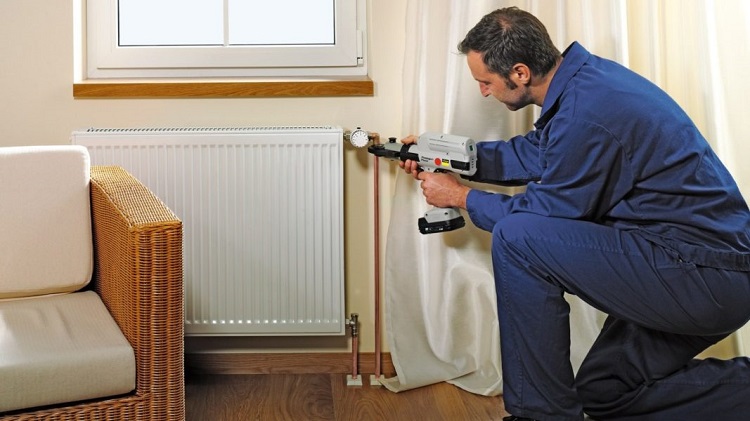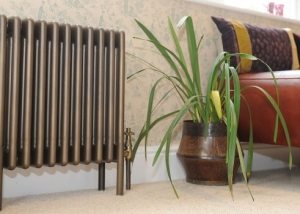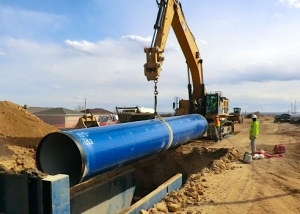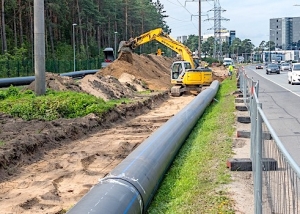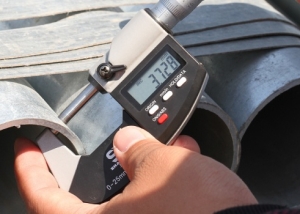Modernization of the heating system with the replacement of old batteries with new models raises many questions on the topic of what to put taps on heating radiators. Thermal equipment is connected today with the use of all types of shut-off and control valves, including valves, Mayevsky air outlets and temperature control devices. This provides a semi-automatic battery mode. But you need to know how to choose the right equipment for mounting or replacing radiators.
Content
Functionality of control devices
Shut-off and control valves are used to control the flow of coolant, air bleeding and full circulation of water in the batteries. Features of the heating circuit, the type of coolant and the installation conditions of the taps on the heating radiators determine the variety and design features of certain regulators.
Important! The general requirement for all control devices is that radiator taps must be made of high-quality metal or polymer and sealed.
Radiators are used in different conditions:
- In a private household (with boiler).
- On the objects connected to the centralized heating network.
- In apartment buildings with independent heating.
The method of operation of the equipment determines the type of fittings - stop and regulating. The first type easily blocks the circulation of the coolant, the other controls the flow rate, reducing or increasing the heating rate of the battery.
In the domestic sense, any control valve on a radiator is not called a valve or valve, but rather a “valve”, although this is not true.
Why do we need battery equipment with overhead devices?
A heating circuit installed in accordance with all the rules is the key to successful and long-term operation. This makes it possible in the cold season to turn off only one battery for replacement or cleaning, without disconnecting the entire circuit or riser branch on all floors.
The Mayevsky crane, which was most often installed only on the top floor, today makes it possible to bleed air plugs from any radiator in the system.
Important information! The main sign of airing is a cold battery (or its upper part) with warm pipes.
Valves with temperature controllers - a good opportunity to control the temperature regime in a single radiator. This is important when one room is very cold or, on the contrary, a little warmer than the whole apartment or house. With the right configuration, there will be significant savings in heating.
The need for shutting off the system with stopcocks also arises for other reasons:
- repair of rooms with wall decoration behind heating blocks;
- regular blowing or flushing of the radiator in order to eliminate deposits (rust, calcium, organic matter);
- emergency leakage;
- one room can not be heated;
- scheduled change of heating device.
Shut-off valves also protect the joints between the batteries and pipes from leaks during hydraulic shocks. Leakage or clogging of one radiator during the heating season will not be a big problem if there is a shut-off valve.
In order to determine the type of locking device, it is important to understand its purpose. For example, an angular faucet for radiators 20x12 is mounted at the points of connection to the battery, and a Mayevsky faucet is mounted directly on the battery instead of the end cap.
The main types of control valves
When upgrading the heating system, taps for different types of radiators may be needed. They differ in different parameters:
- general form;
- configuration;
- material of manufacture;
- cost;
- functional;
- way to adjust the work;
- type of joint with the pipeline.
When buying a control unit, you must carefully read the instructions. For example, a faucet for an oil cooler has few external differences from its counterpart for an aqueous medium or antifreeze. It will quickly fail when installed on a heating circuit designed for a different type of coolant.
Conventionally, valves and taps are classified:
- Adjusting (locking).
- Thermostatic.
Automatic adjustment takes place thanks to a thermostatic head with a relay that captures the temperature readings in the room. The coolant is cut off on a certain branch in manual mode or with presetting. In a niche for batteries of complex configuration, it is recommended to install a remote sensor and an angle tap for the radiator.
Important! When buying a new radiator, carefully check the equipment. The set may include 2 shut-off devices - the lower shut-off valve and the upper valve with a thermal head.
Full range of valves
- Mayevsky trigger valve or air vent for bleeding the air (manual and automatic adjustment);
- shutoff and balancing valves;
- flaps;
- gate valves;
- taps with thermal heads (temperature regulators);
- drain valve for radiator;
- half-turn and full bore valve models.
Ball valves have the following varieties:
- flanged;
- welded;
- coupling.
Flanged models are durable and durable, they withstand the greatest load and extremely high pressure that occurs during water hammer. They are installed mainly on external communications. For apartment radiators and heating appliances of private households, coupling models are most often installed.
Ball valves are more reliable than conventional (with screw thread), they have their own subspecies. Standard pass about 75-80% of the water, full bore - the entire volume of the coolant.
Lock Device Configuration
Valves for adjustment and coolant are straight (standard) and angular (for rotary connection). By varying these varieties, it is easy to mount a heating circuit of any type.
Although the angular ball valve for the radiator is less in demand, without it it is difficult to connect and cut off the coolant flow in rotary sections. It is also mounted to carry out part of the heating circuit.
Important requirements for a direct radiator tap:
- resistance to mechanical damage;
- temperature load in the range of 180 - 200 ° C;
- wear resistance and protection against corrosion processes;
- ease of installation (standard types of joint and thread);
- resistance to pressure up to 40 bar;
- long period of operation without the need for replacement and repair.
The need for certain locking devices is determined by the configuration of the heating circuit, the type of batteries in the apartment and the functionality of the heat flow limiter.Specialists prefer comfortable ball valves like the American one - a coupling with a chuck and a union nut. Two structural elements in one device cope with the function of several devices.
Specialists first of all look at what blocking mechanism the block is equipped with. Valves with a stem and valves with sensors are the basis of various thermostats. The stem provides smooth shifting. The required temperature threshold is set manually using a simple limiter, the regulating device ensures efficient operation. There are expensive valves with thermostats operating in automatic mode, but their price is an order of magnitude higher.
The crane body is an important purchase criterion, because it must cope with the maximum pressure in the system and not rust, which makes the locking rod easily malfunction. At different times, the locking fittings were produced mainly from steel and bronze, today it is brass, silumin (its analogue in all respects) and heavy-duty plastic.
Note! Polymeric cases are considered durable and reliable, but gaskets are needed not from rubber, but from synthetic rubber of increased strength. Most often they are equipped with corner PP (polypropylene) models.
When buying, it is important to compare all the parameters specified in the technical description of the product. The diameter of the pipe and the bore of the valve must match, the maximum pressure in the system must not exceed the allowable threshold. For rotary sections and lower joints of radiators with pipes, angle cranes are most often used.
Technical specifications
Ball valves are usually installed in the joint of the radiator with the coolant supply pipe (adjusting is to the return). Ball valves are considered more reliable than threaded ones; they better withstand water hammer and ultimate pressure in the heating system, regardless of the number of storeys. The main element is a rotatable metal ball with a through hole, it rotates by a handle 90 °, completely blocking the coolant if necessary. Their bodies are available in silumin, polymer or brass.
The reliability of this device makes it possible to cut off the flow even during the heating season in order to replace equipment or eliminate leakage. The throughput, depending on the model, gives 100% of the coolant passage or 70 - 80, but this does not affect the reliability of the operation.
Mayevsky's crane is the most popular air valve with manual adjustment to eliminate air jams in radiators. Its analogue is semi-automatic and automatic air vents. A washer is poured into the polymer case, into which a threaded cone is screwed in, under it there is a recess for a screwdriver or key included in the package. Air is vented through the washer with the hole.
Helpful advice! The installation of this valve is not fully screwed in - the system pressure will correct it in its own way, preventing it from being installed back. The key is inserted into the groove and rotates the cone by 1 revolution. After a complete air outlet, water flows, after which the locking cone is screwed back.
Valves with thermal heads are relevant in private homes and systems, where there are preconditions for saving on heating. This is the simplest way to adjust the temperature of a single room (mounted on each battery) and the entire building as a whole (at the feed from the boiler). Their function is to regulate the flow of the coolant by reducing the total volume, while they are combined on the return with a ball drain valve for the radiator.
Modern products have a decent design, but they are preferable to hide behind window textiles or a decorative screen. Simple design - the cone with the rod is pressed without rotation through the thread.Some thermal valves do not have a lock, and an additional stopcock is installed for them for full functionality.
Welded flushing valves - to drain the coolant, they are used only to purge the system and clean clogged radiators. Structurally, they are also quite primitive - this is a long stem in a metal case with a rubber gasket, which requires periodic replacement. The product is opened with pliers or a gas key.
Important! In the absence of this device in the configuration, it is recommended to replace it with an adapter with a plug valve.
Balancing valve - to adjust the thermal regime of the system, without which it is possible to manually adjust the passage hole for the coolant. It is installed on the return line. In a heating circuit with automatic temperature correction, this shut-off unit also responds to pressure balancing.
It is a mistake to assume that the heat supply circuit will work independently without all of these devices or be automatically adjusted. Even if some of the valves are equipped with electronics, it is important to check the operation of all units in order to increase the efficiency of the entire heating circuit.
Valves and taps are needed in any circuit, because a little air is always dissolved in the coolant, forming gas plugs. Calcium scale with rust is formed in the pipes, which requires flushing of the radiators. When installing the system, all valves, taps and gates can be taken as a preventive measure, but over time it will become clear how much they simplify the management of the coolant.
Mounting options
Morally obsolete equipment with natural circulation, airing and clogged batteries will have to be replaced sooner or later. Locking elements were not installed, with the exception of a crane for bleeding air on the upper floor along the riser of the entrance. In some areas, pipes of a smaller section were mounted.
Today, heating circuits are equipped with shutoff valves, which are often included in the general package. It has the simplest design (which does not reduce its effectiveness) and two working positions:
- open;
- closed.
Due to improper installation and operation with partially overlapped sections, the system may be subject to unplanned loads. Overpressure can disrupt threads on old taps or find a “weak spot” where a leak or rupture forms.
The layout of the heating circuit determines the optimal set of valves and taps of various configurations. The place for installation of shut-off valves, a Mayevsky crane and other coolant regulators depends on this. The ball valve is mounted right next to the heating block, bypassing the drives.
Key recommendations:
- Single pipe scheme. Between the bypass and the battery, 2 ball valves (for supply and return) can be installed to leave it in working position, draining the coolant from the system at the time of repair or replacement.
- Autonomous two-pipe system. The thermostatic valve is mounted on the supply pipe, the balancing valve on the return pipe. Such a tandem provides normal working pressure support.
Important! In an autonomous 1-pipe circuit, a ball valve is put on the feed, the control valve on the return. With the flow shutoff function, a second tap is not required.
Before installation, it is important to check all parameters. The body of a modern crane has markings and designations, including flow direction. This symbol must not be ignored during installation.
Also, in the technical description for the model, important characteristics should be indicated, which are usually oriented when buying:
- limit and working pressure in the system;
- temperature amplitude;
- mounting method (flange, threaded connection);
- type of heat carrier (water, oil, antifreeze).
When choosing valves and taps, you should pay attention to the materials of gaskets and gaskets, to the metal of the body. There are combined models where brass, steel and solid polymers were used. Usually these are expensive and quite reliable valves.
Popular brands of good stop valves compatible with our systems:
- Luxor and Itap (Italy);
- Oventrop (Germany);
- Danfoss (Denmark);
- Valtec (joint production of the Russian Federation and Italy).
A simple shut-off valve is enough if there is no need or ability to regulate the temperature regime. The Majewski faucet must be present on the end radiators (instead of the plug) and at the highest points of the heating circuit.
Having dealt with the parameters and functionality of faucets, valves and valves for heating radiators, it is easier to repair or replace inefficient sections. The choice in favor of budget cranes often results in additional costs for the elimination of defects. Expensive valves are a good investment in comfort and heat. A properly mounted circuit will facilitate temperature control and preventative battery cleaning.
